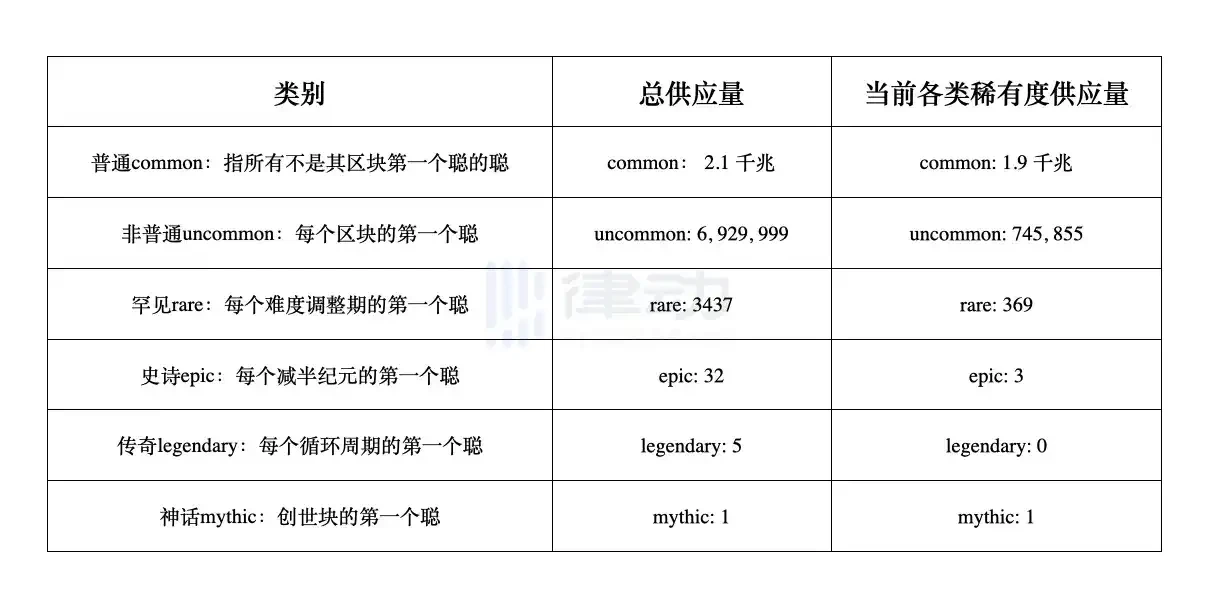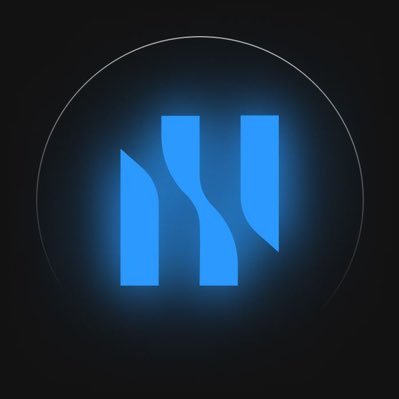Unveiling the Bitcoin Ecosystem: Bitcoin Ecosystem Knowledge Pyramid
Original author: Jaleel , BlockBeats
With the birth of the Runes protocol and the outbreak of the third round of Bitcoin ecology, more and more communities are paying attention to the Bitcoin ecology, but the biggest confusion for most novices is still that the threshold of Bitcoin ecology is too high. Because BlockBeats sorts out the various terms of Bitcoin ecology into five knowledge levels, it unveils the veil of Bitcoin ecology layer by layer.

Entry level: topics that most Bitcoin ecosystem newbies are familiar with
1. Ordinals
The Ordinals protocol focuses on minting NFTs on satoshi, the smallest unit of Bitcoin, and uses Bitcoins Taproot upgrade to allow each satoshi to represent a unique digital asset. Ordinals uses the inherent characteristics of the Bitcoin blockchain to allow each satoshi to uniquely represent a digital asset, bringing functionality similar to NFTs on Ethereum to the Bitcoin network without the need for any additional layers or tokens.
2. Casey Rodarmor
Casey Rodarmor ( @rodarmor ) is a programmer and Bitcoin developer, and the creator of the Ordinals and Runes protocols. By developing the Ordinals protocol, Casey provides a new way to store and transfer non-monetary data (such as digital artworks) directly on the Bitcoin blockchain. It can be said that without Casey, there would be no Bitcoin ecosystem.

Image source: Ordinals summit 2023
3. BRC-20
BRC-20 is an experimental standard for creating and transferring fungible tokens on the Bitcoin network. It was introduced by anonymous developer Domo in March 2023 and is designed to mimic Ethereums ERC-20 standard. Unlike ERC-20, which uses smart contracts, BRC-20 tokens are created by burning JSON data on the Bitcoin networks satoshi (the smallest unit).
4. Domo
Domo ( @domodata ) is the creator of the BRC-20 protocol. Domo has remained anonymous since the development of BRC 20. It has also created a fund, Layer 1 Foundation, to help with the governance of BRC 20.

Image source: Ordinals summit 2023
5. Runes
Runes is a new Bitcoin protocol developed by Casey Rodarmor, the creator of Bitcoin Ordinals. Unlike Ordinals, which use NFTs to issue NFTs, Runes is used to issue fungible tokens on the Bitcoin network. It allows users to directly create, mint, and transfer tokens in Bitcoins UTXO model without relying on any centralized services or intermediaries. Runes is optimized on the BRC-20 protocol, combining the original two transactions of minting and listing into one.
6. Atomicals
The Atomicals protocol allows the creation and management of digital assets called ARC-20 on the Bitcoin blockchain. These assets use the UTXO model and can store multiple files, making them useful for more complex application scenarios. Unlike BRC-20 and Ordinals, Atomicals AVM is designed to provide greater flexibility and scalability, implement smart contract-like functionality, and support more complex digital asset management. Compared to Casey and Domo, Arthur, the author of the Atomicals protocol, is more anonymous, never shows up or appears at offline events, and has only been interviewed a few times with audio appearances.
7. Miner Fees
When users conduct Bitcoin transactions, they pay miners a fee in order to include their transaction in a block. Miner fees are transaction fees on the Bitcoin network, ensuring that miners have an economic incentive to support the operation and security of the network.
The second tier: a topic familiar to most Bitcoin ecosystem players
1. Bitcoin Halving
Bitcoin halving refers to the halving of Bitcoin mining rewards, which occurs every 210,000 blocks, approximately every four years. The main purpose of halving is to control the issuance of Bitcoin, which is part of Bitcoins design to simulate the gradual reduction in the mining rate of scarce resources (such as gold). Halving directly affects the incentive structure of miners and is considered to have a significant impact on Bitcoin prices. The most recent halving was on April 20, 2024, and the next halving is expected in February 2028, when the block height will reach 1,050,000.
2. Satoshis
The smallest unit of Bitcoin is 1 Bitcoin, which is equal to 100,000,000 satoshi. As the value of Bitcoin can be very high, satoshi provides a smaller unit of currency, making micro-transactions possible.
3. Hash rate
Hash Rate refers to the number of times all mining devices in the network try to solve the block hash per second, usually expressed in hashes per second (H/s). Hash rate is a key indicator for measuring the security of the Bitcoin network. A higher hash rate means higher computational difficulty and security.
4.POW
The full name is Proof of Work. This is a cryptographic algorithm used to prevent abuse of network services (such as spam or distributed denial of service attacks). Bitcoins proof of work requires miners to solve a complex mathematical problem, the difficulty of which is automatically adjusted to ensure that the entire network generates a new block approximately every 10 minutes. Miners who successfully solve the problem can add new blocks to the blockchain and receive new bitcoins as rewards. This process not only protects the network from attacks, but also serves as a mechanism for the issuance and circulation of Bitcoin currency.
5.UTXO
The full name is Unspent Transaction Outputs, which refers to unspent transaction outputs, representing the amount of Bitcoin in the Bitcoin network that can be used as new transaction inputs. Bitcoins transaction model is based on UTXO, where each transaction begins by referencing the output of a previous transaction as its input and ends with the creation of a new UTXO, which can be used by future transactions.
6. Lightning Network
Lightning Network, a second layer payment protocol built on top of the Bitcoin blockchain, is designed to enable instant, high-throughput micropayments. The Lightning Network reduces transaction congestion and fees on the blockchain by creating a network of payment channels, making it economical and fast to make small payments.
The third level: A topic that only experienced Bitcoin ecosystem OGs are familiar with
1. Nostr
Nostr is a simple decentralized social network protocol that uses key pairs to allow users to create and manage their own identities and communicate through events such as posts, contact information, and other social interactions. Founder Fiatjaf ( @fiatjaf ), although this protocol has no direct connection with Bitcoin, it has received widespread attention from Bitcoin supporters because it represents a decentralized and censorship-resistant way of communicating. In April 2023, a Lightning Network custodial solution Nostr Assets Protocol also adopted the name Nostr.
2. BIPs
The full name is Bitcoin Improvement Proposals. It refers to the Bitcoin community-driven design document that proposes improvements to new features, information, or the environment for review by the Bitcoin community. BIPs are an important part of the Bitcoin development process, and they provide a formal way to improve the Bitcoin network.
3.Mempool
Mempool refers to the collection of all unconfirmed transactions stored on a Bitcoin network node. This term is short for Memory Pool. When a transaction is sent to the Bitcoin network but has not yet been included (confirmed) in any block, the transaction is in the Mempool. Miners select transactions from the Mempool to create new blocks, usually giving priority to transactions with higher fees.
4. Rare Sagittarius
Rare Satoshi is not an official term for the Bitcoin network, but a unique Satoshi associated with a specific Bitcoin block time that appeared after the birth of Ordinals. Bitcoin is composed of Satoshi, and each Bitcoin is composed of 100 million Satoshi. The scarcity and uniqueness of Satoshi can be determined by ordinal theorists, which gives Satoshi special meaning, whether it is the Bitcoin mined by Satoshi Nakamoto, the first Satoshi in a block, or the Satoshi used to buy pizza. Related reading: Rare Satoshi: The next wave of hype narrative after BRC 20, are you ambushed?

5. Bitcoin Full Node
A Bitcoin full node is a full client running the Bitcoin protocol, maintaining a complete copy of the blockchain data. Full nodes verify all transactions and blocks, ensuring that they comply with Bitcoins rules. Bitcoin full nodes are critical to the health and decentralization of the network. They help to decentralize the network, ensuring that no single entity can control or tamper with Bitcoins transaction history. Full nodes also improve the security of the network, because the more nodes verify transactions, the more difficult it is to manipulate the entire system.
Level 4: Officially Down the Rabbit Hole
1.index
In the context of Bitcoin, index or indexing usually refers to a structure in the blockchain database that is used to quickly retrieve data. For example, the transaction index (txindex) is an optional feature that allows nodes to create an additional database to store metadata for each transaction, including their location in the blockchain. When transaction indexing is enabled, nodes can access information about any transaction more quickly, which is very useful for developing applications and services, especially those that need to provide extensive blockchain data queries.
2.OP_RETURN
OP_RETURN is an opcode in the Bitcoin scripting language that allows a small piece of data (currently capped at 80 bytes) to be embedded in a Bitcoin transaction. This data itself is not spendable, so it is not used as part of the input. OP_RETURN is mainly used to add metadata to transactions, which can be used for a variety of applications, such as proving that data existed at a certain point in time (timestamping service), adding simple messages, or implementing more complex blockchain layer applications. Since this data is permanently recorded on the Bitcoin blockchain, it provides developers with an immutable data storage option.
3. Schnorr Signatures
Schnorr signature is a digital signature algorithm proposed by mathematician Claus Schnorr. In Bitcoin, Schnorr signature was introduced through the Taproot upgrade and is intended to replace or coexist with the existing ECDSA (Elliptic Curve Digital Signature Algorithm) signature scheme. Schnorr signature provides multiple advantages, including simpler signature aggregation, enhanced privacy, and higher efficiency. Signature aggregation allows multiple signatures to be combined into one, reducing the amount of data and lowering transaction fees. In addition, it also improves support for multi-signature transactions, making transactions involving multiple parties look the same as ordinary transactions, thereby enhancing privacy.
The fifth level: the most profound knowledge of Bitcoin ecology
1. Segregated Witness
SegWit or Segregated Witness in English refers to an upgrade of the Bitcoin protocol that aims to solve the problem of transaction scalability and transaction malleability. Segregated Witness increases the effective capacity of the block by isolating the signature information from the transaction data, and to a certain extent reduces the size of each transaction, thereby improving network throughput.
2.PSBT
Partially Signed Bitcoin Transactions, also known as partially signed Bitcoin transactions in Chinese, is a standard format for transmitting unfinished transactions between different participants for signature. It enables multiple parties to collaborate to create, sign, and send transactions without exposing private keys to other participants.
3.RBF
Replace-by-Fee refers to a mechanism for replacing fees, which allows the sender to replace the original transaction by increasing the fee before the transaction is confirmed by the blockchain. This mechanism is often used to speed up the confirmation of transactions or to correct unconfirmed transactions that were set too low due to manual errors.
4. RBF Sniper
RBF gave rise to the RBF attack, a sniping strategy to earn revenue. Users monitor unconfirmed low-fee transactions and attempt to replace the original transaction by submitting the same transaction at a higher rate using the RBF mechanism. This is often used by mining pools or individual miners who hope to increase their revenue by extracting higher transaction fees.
5. Taproot
Taproot is an important upgrade of the Bitcoin network, which mainly enhances privacy and scalability through a combination of MAST (Merkelized Abstract Syntax Trees) and Schnorr signatures. Taproot makes complex transactions look the same as ordinary transactions on the blockchain, thereby improving privacy. In addition, it also improves the scalability and efficiency of the network. It can be said that it is because of the Taproot upgrade that the Bitcoin ecosystem has begun.
This article is sourced from the internet: Unveiling the Bitcoin Ecosystem: Bitcoin Ecosystem Knowledge Pyramid
Related: This Is Why Cardano (ADA) Price Is Potentially on the Cusp of a 15% Correction
In Brief Cardano price is losing the local support of $0.72 and will potentially find some support at $0.68. The MVRV ratio in the danger zone suggests that ADA’s bullishness is saturating and could lead to selling for profit. Cardano could invalidate the bearish outcome if it validates the two-month-old bullish rounding bottom pattern by tagging $0.76. Cardano’s price had an impressive start in March, but this momentum slowed over the past few days. ADA is now threatened by a potential correction that could wipe out a large chunk of its recently noted gains. But what happens if the third-generation cryptocurrency manages to validate this bullish pattern from December? Cardano Price Is on the Way Cardano’s price rose by more than 13% in the past week, trading at $0.72 at…






